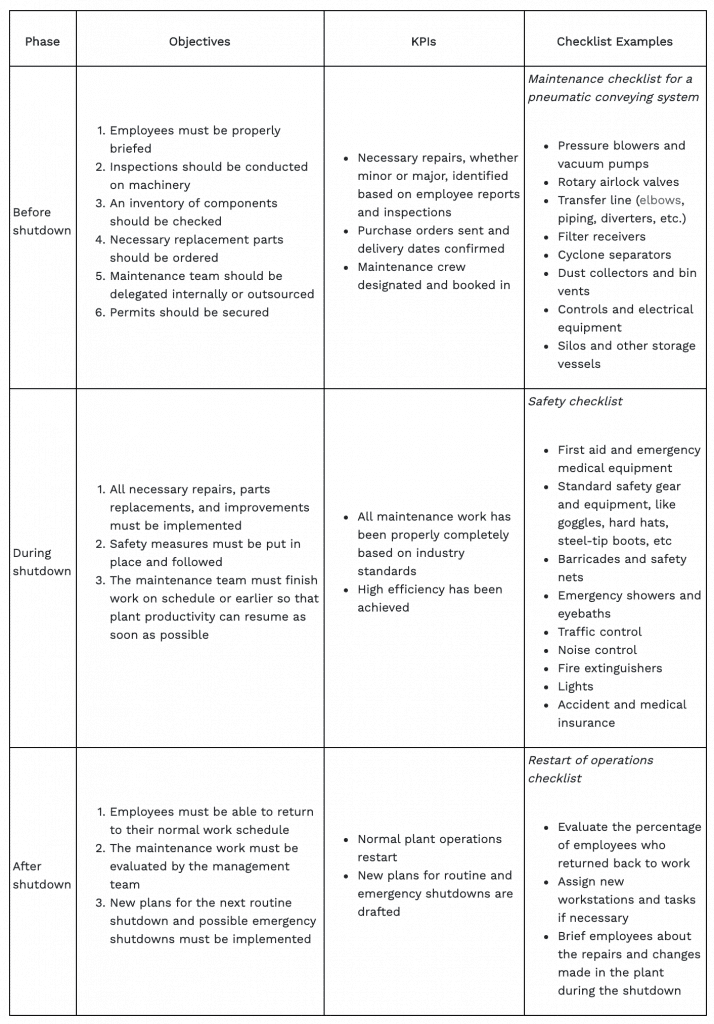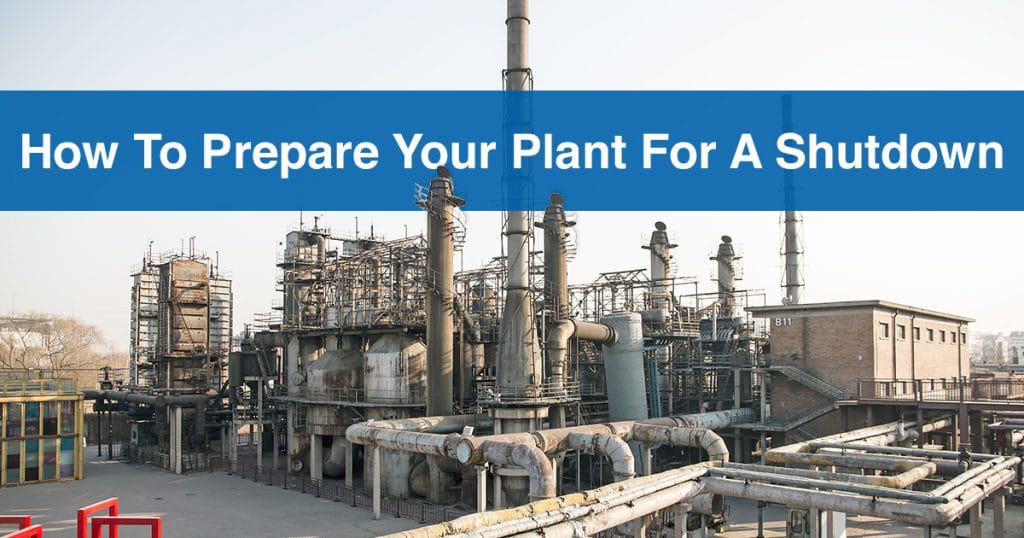It’s an important part of a plant’s annual routine to ensure the efficient operation of equipment and machinery, such as the pneumatic conveying system.
Plant shutdowns are usually done during holidays when more workers are likely to be on vacation. Only the maintenance team, which can be outsourced, will work during this time. Maintenance shutdowns include getting damaged or deteriorated parts of machinery repaired or replaced. To do this efficiently, you must prepare and order the necessary replacement parts several weeks in advance.
Read on to find out how to prepare for a plant shutdown with minimum stress and loss of time and revenue.
What Does A Plant Shutdown Involve?
Shutting down plant operations to give way for routine maintenance should be carefully planned and coordinated. There are several things that should be considered, including:
- Timing
- Employee safety
- Inventory of components
- Inventory of replacement parts
If you’re the plant system engineer or the plant manager, it’s important to prepare for a plant shutdown at least a month, if not longer, before the scheduled shutdown date. Part of this preparation will involve briefing employees about the process, and you’ll need the help of your employees to log and report observations about the things that may need to be replaced or repaired.
A plant shutdown can also be gradually or partially completed. If it’s a partial shutdown, you could isolate certain parts of the plant for maintenance and renovations. You may need to secure permits and insurance if you plan to carry out a major renovation, so make sure to apply for these well in advance.
Plant shutdowns can also be done as an emergency measure. An emergency shutdown rarely happens, but if it does, it could mean serious disruption in the productivity of the plant. Emergency shutdowns due to accidents or machine malfunctions can be prevented if routine maintenance shutdowns are done properly and at the right time.
How To Plan For A Plant Shutdown
A plant shutdown should be planned like a typical project. You must include specific key performance indicators, or KPIs, which include milestones and deadlines. You might also want to delegate tasks and responsibilities to individuals and teams. Preparations should also include a systematic plant shutdown checklist. Here’s an example of the kind of plan you might want to make:

How Do You Manage A Shutdown?
Managing a shutdown is similar to managing any other project that a company may undertake. The main difference is the purpose. Since company shutdowns are usually for maintenance reasons, you may need to outsource the job to experienced contractors instead of simply designating the job to existing employees.
If it’s a regularly scheduled annual shutdown for maintenance purposes, you’ll need to order necessary replacement parts at least a month in advance. This is because some specialized components may not be readily in stock later down the line, and may also need to be fabricated based on orders received. Therefore, it may take weeks before your parts can be delivered.
Since regular shutdowns are typically scheduled during holidays when more employees are on vacation, some delays in trucking should also be expected. This means that you must also have a contingency plan in case of possible delays.
Here are a few more aspects you should carefully consider when drafting your shutdown plan:
- Permits
- Maintenance crew
- Equipment and replacement parts
- Safety facilities and protocols
Tips For Saving Time During A Shutdown
One of the main objectives of a shutdown is to get back to normal operations as soon as possible. This is because the time spent on shutdown can result in financial losses.
Here are some tips on how you can save time during a shutdown:
- Prioritize time-critical activities
- Coordinate with contractors to prioritize access to equipment
- Hire a catering service for the workers onsite
- Provide a resource package for external contractors, like the map of the area and a list of hotels
If your plant is due for a maintenance shutdown, it’s important to plan it effectively and as far in advance as possible, so that safety is maintained, losses are minimized, and business can resume as soon as possible.
At Progressive Products, we won’t sell you anything you don’t need – contact us today to find the right solution for you.











































